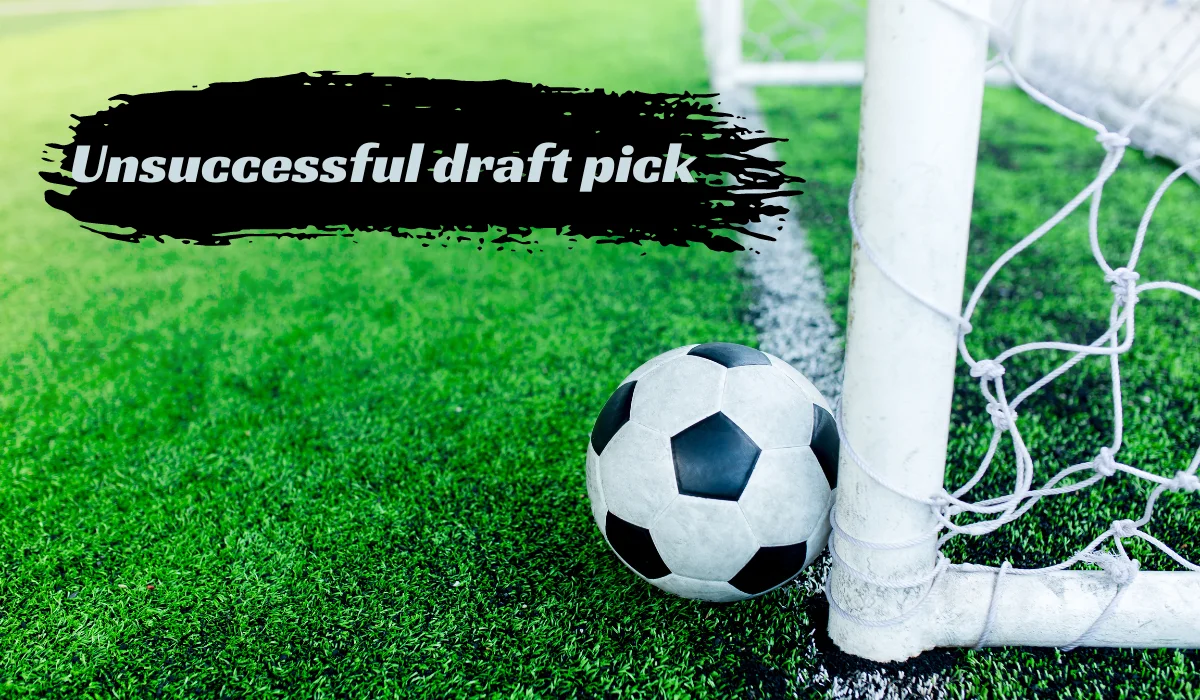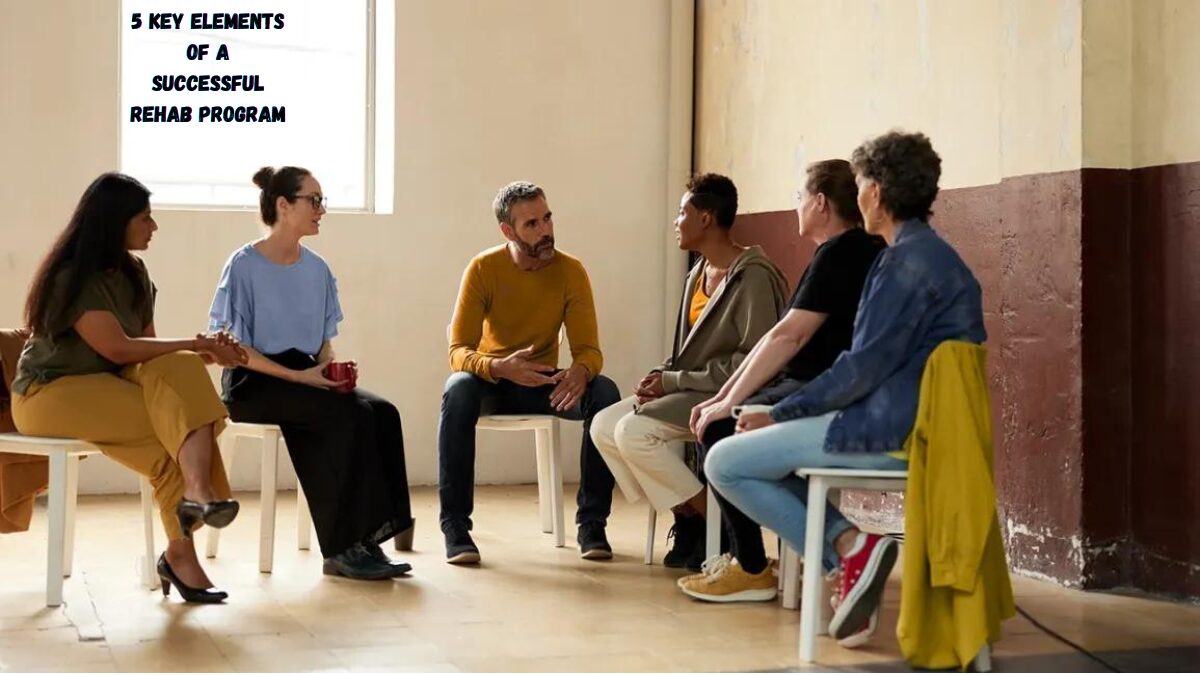Sports
Baldezinho: The Dynamic Fusion of Skill and Fun

Baldezinho, a game that blends agility, strategy, and camaraderie, has captivated players worldwide with its thrilling gameplay and vibrant community. Originating from the streets of Brazil, this dynamic sport has evolved into a global phenomenon, attracting enthusiasts of all ages and backgrounds. In this article, we delve into the fascinating world of Baldezinho, exploring its history, rules, benefits, and cultural significance.
Introduction to Baldezinho
Baldezinho, also known simply as “Balde,” is a fast-paced street game that combines elements of football, volleyball, and martial arts. Played on a small court with a ball similar to a soccer ball, the objective is to keep the ball in the air using any body part except the hands. With its emphasis on improvisation and creativity, Baldezinho offers a unique and exhilarating experience for participants and spectators alike.
History and Origins
Early Beginnings
The roots of Baldezinho can be traced back to the streets of Brazil, where children would gather to play informal games using improvised equipment. These early iterations laid the foundation for the structured version of the game that emerged later.
Evolution of the Game
Over the years, Baldezinho has undergone significant evolution, with players introducing new techniques and strategies to enhance the gameplay. From its humble beginnings, the sport has grown into a highly organized activity with dedicated leagues and competitions.
Rules and Gameplay
Objective
The primary objective of Baldezinho is to keep the ball in the air for as long as possible without letting it touch the ground. Players use various parts of their body, except their hands, to pass the ball to their teammates and prevent it from falling.
Setup
Baldezinho is typically played on a rectangular court divided into two halves by a net. Each team consists of two or more players, and the game can be played indoors or outdoors.
Turn Structure
The game begins with a serve, after which players take turns hitting the ball back and forth over the net. Points are scored when the opposing team fails to return the ball successfully.
Popular Variants
Classic Baldezinho
The traditional version of Baldezinho follows the standard rules outlined above, focusing on agility and teamwork.
Baldezinho Plus
Baldezinho Plus incorporates additional challenges, such as limiting the number of touches per player or introducing obstacles on the court. This variant requires players to adapt quickly and think strategically.
Health and Fitness Benefits
Physical Activity
Baldezinho offers a fun and effective way to stay active, promoting cardiovascular health, coordination, and flexibility. The fast-paced nature of the game keeps players on their toes and encourages constant movement.
Mental Engagement
In addition to its physical benefits, Baldezinho also provides mental stimulation, requiring players to anticipate their opponents’ moves and make split-second decisions. This cognitive challenge enhances concentration and problem-solving skills.
Social Impact
Community Building
Baldezinho brings people together from diverse backgrounds, fostering friendships and camaraderie both on and off the court. Through shared experiences and mutual support, players develop strong bonds that transcend cultural and linguistic barriers.
Inclusivity
One of the most remarkable aspects of Baldezinho is its inclusive nature, welcoming players of all ages, genders, and abilities. Regardless of skill level, everyone can participate and contribute to the game’s vibrant community.
Baldezinho Tournaments and Events
Local Competitions
Communities around the world organize Baldezinho tournaments and events, providing players with opportunities to showcase their skills and compete against others. These grassroots initiatives contribute to the growth and popularity of the sport at the grassroots level.
International Championships
At the highest level, Baldezinho enthusiasts come together to compete in international championships, showcasing their talents on a global stage. These prestigious events attract top players from across the globe and generate excitement among fans worldwide.
Famous Baldezinho Players
Profiles and Achievements
Several players have gained recognition for their exceptional skills and contributions to the Baldezinho community. From street performers to professional athletes, these individuals inspire others with their dedication and passion for the game.
The Future of Baldezinho
Growing Popularity
As awareness of Baldezinho continues to spread, the sport is gaining popularity in new regions and demographics. With its accessible and inclusive nature, Baldezinho has the potential to become a mainstream activity enjoyed by millions worldwide.
Innovations and Trends
Innovations in technology and game design are shaping the future of Baldezinho, offering new possibilities for gameplay and engagement. From virtual reality experiences to interactive training tools, these advancements are enriching the Baldezinho experience for players of all ages.
Getting Started: Tips for Beginners
Equipment Recommendations
To get started with Baldezinho, all you need is a ball and a designated playing area. While specialized equipment is not required, investing in a quality ball can enhance the playing experience.
Training Strategies
For beginners, practicing basic ball control skills and coordination exercises is essential. Start with simple drills and gradually increase the difficulty as you improve. Watching videos of experienced players can also provide valuable insights into technique and strategy.
Baldezinho and Technology
Online Platforms
The rise of online platforms has made it easier than ever for Baldezinho enthusiasts to connect and share their experiences. From instructional videos to virtual tournaments, the internet offers a wealth of resources for players of all levels.
Virtual Reality Integration
Virtual reality technology is revolutionizing the way people experience Baldezinho, allowing players to immerse themselves in virtual environments and simulate real-world gameplay scenarios. This innovative approach enhances training opportunities and expands access to the sport.
Educational Applications
Schools and Universities
Baldezinho has gained recognition for its educational value, promoting teamwork, communication, and problem-solving skills among students. Many schools and universities have integrated Baldezinho into their physical education programs as a fun and engaging activity.
Skill Development
Beyond its recreational benefits, Baldezinho also serves as a platform for skill development and personal growth. By challenging themselves to improve their performance on the court, players build resilience and confidence that can translate into other areas of their lives.
Baldezinho as a Cultural Phenomenon
Art and Music Influence
Baldezinho’s influence extends beyond the realm of sports, inspiring artists, musicians, and filmmakers to explore its cultural significance. From street art to music festivals, Baldezinho has become a symbol of creativity and expression in communities around the world.
Representation in Media
In recent years, Baldezinho has gained increased visibility in mainstream media, with documentaries, feature films, and television programs showcasing its unique appeal. These portrayals help to raise awareness of the sport and attract new participants to the community.
Challenges and Controversies
Safety Concerns
Like any physical activity, Baldezinho carries inherent risks of injury, particularly when played in uncontrolled environments or with inadequate supervision. Educating players about proper techniques and safety precautions is essential to minimize the risk of accidents.
Governance Issues
As Baldezinho continues to grow in popularity, questions have arisen about governance and regulation within the sport. Ensuring fair play, ethical conduct, and transparency in decision-making processes is crucial to maintaining the integrity of Baldezinho as a competitive activity.
Conclusion
In conclusion, Baldezinho is more than just a game—it’s a vibrant community, a cultural phenomenon, and a vehicle for personal and social development. With its roots firmly planted in the streets of Brazil, Baldezinho has blossomed into a global sensation, captivating players and fans around the world. As we look to the future, the possibilities for Baldezinho are endless, promising new adventures, friendships, and experiences for generations to come.
Is Baldezinho suitable for all ages?
ANSWER:
Yes, Baldezinho can be enjoyed by people of all ages, from children to seniors.
Do I need special equipment to play Baldezinho?
ANSWER:
All you need is a ball and a designated playing area—no specialized equipment is required.
Can I play Baldezinho indoors?
ANSWER:
Yes, Baldezinho can be played indoors or outdoors, depending on the available space.
How can I improve my Baldezinho skills?
ANSWER:
Practice regularly, watch instructional videos, and learn from experienced players to improve your skills.
Are there professional Baldezinho leagues?
ANSWER:
While Baldezinho is primarily played at the grassroots level, there are professional leagues and competitions for top players to showcase their talents.
Sports
Unsuccessful Draft Pick: A Deep Dive into Missed Opportunities in Sports

Introduction
The world of sports is filled with stories of triumph and glory, but not every player drafted into a professional league becomes a star. Some become what are known as “unsuccessful draft picks.” But what does this term really mean? In essence, an unsuccessful draft pick refers to a player who was highly anticipated to succeed but failed to meet expectations. Analyzing these cases is crucial for teams to refine their selection processes and avoid future pitfalls.
The Draft System Explained
What is a Draft?
In many professional sports, the draft is a system used to allocate new talent to teams. This process ensures a fair distribution of new players, helping maintain competitive balance within the league.
How Does the Draft Process Work?
Teams take turns selecting eligible players, often from college or international leagues. The order is usually determined by the previous season’s standings, with the worst-performing teams picking first to help them improve.
Purpose and Goals of the Draft
The primary goal of the draft is to strengthen teams by adding fresh talent. It also provides young athletes with a structured pathway to professional sports, balancing opportunities across the league.
High Expectations and Pressures
Expectations Placed on Top Draft Picks
Top draft picks come with immense expectations. They are often seen as saviors for struggling teams, and the pressure to perform can be overwhelming.
Media and Fan Pressures
The spotlight is always on high draft picks, with media scrutiny and fan expectations adding to the pressure. Every move, on and off the field, is analyzed and criticized.
Financial Implications
High draft picks often come with lucrative contracts and endorsements. However, these financial rewards also bring a different kind of pressure, as players must justify their hefty paychecks with their performance.
Famous Unsuccessful Draft Picks
NFL: Ryan Leaf
Ryan Leaf, drafted second overall in the 1998 NFL Draft, is one of the most infamous examples. Despite his college success, his professional career was marred by poor performance and off-field issues.
NBA: Anthony Bennett
Anthony Bennett, the first overall pick in the 2013 NBA Draft, struggled with fitness and performance, ultimately becoming one of the biggest busts in NBA history.
MLB: Mark Appel
Mark Appel, the first overall pick in the 2013 MLB Draft, faced injuries and performance issues, leading to his eventual retirement without making it to the major leagues.
Factors Leading to Unsuccessful Draft Picks
Injuries
Injuries are a significant factor that can derail a promising career. Even the most talented players are at the mercy of their physical health.
Poor Performance
Some players excel in college or minor leagues but fail to adapt to the professional level. The reasons vary from skill mismatches to the inability to handle the competitive pressure.
Off-field Issues
Personal conduct, legal troubles, and substance abuse can all impact a player’s career. These issues can distract from their performance and damage their reputation.
Misjudgment of Talent
Scouting is not an exact science. Teams sometimes overlook red flags or overestimate a player’s potential, leading to unsuccessful picks.
Injuries: The Unseen Enemy
Examples of Careers Derailed by Injuries
Many promising careers have been cut short by injuries. Players like Greg Oden in the NBA and Bo Jackson in the NFL/MLB had their potential snatched away due to recurring injuries.
Impact on the Player and the Team
Injuries not only affect the player’s career but also the team’s performance and strategic planning. An injured star can leave a significant void in the team lineup.
Performance Under Pressure
Why Some Players Can’t Perform at the Professional Level
The transition from amateur to professional sports can be daunting. Some players struggle with the increased pace and competition.
Psychological Factors
Mental health plays a crucial role. Anxiety, depression, and lack of confidence can severely impact a player’s performance.
Case Studies
Looking at case studies of players like JaMarcus Russell in the NFL and Kwame Brown in the NBA, it’s clear that mental resilience is as important as physical talent.
Off-field Issues
Personal Conduct and Its Impact
Players’ personal lives can greatly affect their professional careers. Misconduct can lead to suspensions and tarnish their reputation.
Legal Troubles
Legal issues, ranging from DUIs to more severe crimes, can derail a career. Players like Plaxico Burress, who served jail time, show how off-field behavior can impact on-field opportunities.
Substance Abuse
Substance abuse is a serious issue. It can lead to suspensions and long-term damage to a player’s health and career, as seen in the cases of Josh Gordon in the NFL.
Misjudgment of Talent
Scouting Errors
Scouts sometimes get it wrong. Players may be overvalued based on college performance, which doesn’t always translate to professional success.
Overlooking Red Flags
Red flags in a player’s background, such as attitude problems or injury history, can be overlooked in the excitement of their potential.
Comparison with Successful Picks
Comparing unsuccessful picks with successful ones highlights the importance of thorough scouting and evaluation. Players like Tom Brady, picked 199th in the NFL Draft, underscore that talent can be found in unexpected places.
The Cost of an Unsuccessful Draft Pick
Financial Costs
Teams invest heavily in top draft picks. When these investments don’t pan out, it can be a significant financial loss.
Team Performance Impact
An unsuccessful pick can impact team performance, leading to a lack of progress and potentially costing coaches and executives their jobs.
Long-term Consequences
Long-term consequences include loss of fan trust and reduced morale within the team.
How Teams Try to Avoid Unsuccessful Picks
Improved Scouting Methods
Teams continually improve their scouting methods, using more data and comprehensive evaluations to make informed decisions.
Psychological Evaluations
Understanding a player’s mental makeup is crucial. Psychological evaluations help teams gauge how players might handle the pressures of professional sports.
Data Analytics and Technology
The use of data analytics and technology has revolutionized the scouting process. Teams now use advanced metrics to assess players’ potential more accurately.
Lessons Learned from Unsuccessful Draft Picks
How Teams and Players Can Learn from Past Mistakes
Learning from past mistakes is vital. Teams review what went wrong with previous picks to improve future selections.
Importance of Resilience and Adaptability
Resilience and adaptability are key traits for success. Players who can overcome initial setbacks often find long-term success.
Successful Turnarounds
Players Who Overcame Initial Struggles
Some players manage to turn their careers around. Examples include Drew Brees, who overcame early injuries to become an NFL legend.
Factors Contributing to Their Comeback
Support systems, mental toughness, and a strong work ethic contribute to successful turnarounds.
Fan Perspectives
How Fans React to Unsuccessful Picks
Fans often express disappointment and frustration with unsuccessful picks, leading to increased pressure on both the player and the team.
Impact on Team Loyalty and Support
While unsuccessful picks can dampen fan enthusiasm, loyal fans continue to support their teams, hoping for better future picks.
Conclusion
Unsuccessful draft picks are an inevitable part of sports. By understanding the factors that lead to these outcomes, teams can refine their strategies and improve their chances of success. The draft process, though imperfect, remains a vital component of building competitive teams and discovering future stars.
What is a draft bust?
Answer:
A draft bust is a player who was highly anticipated to succeed based on their draft position but failed to meet expectations due to various factors like poor performance, injuries, or off-field issues.
Can an unsuccessful draft pick still have a successful career?
Answer:
Yes, some players labeled as unsuccessful draft picks can turn their careers around with hard work, determination, and the right support system.
How do teams recover from bad draft picks?
Answer:
Teams recover by learning from their mistakes, improving their scouting processes, and sometimes trading for more reliable players to fill the gaps left by unsuccessful picks.
Are there common traits among unsuccessful draft picks?
Answer:
Common traits often include overestimated talent, susceptibility to injuries, poor mental resilience, and off-field issues. However, each case is unique.
How important is mental health in determining the success of a draft pick?
Answer:
Mental health is crucial. A player’s ability to handle pressure, stay focused, and maintain confidence significantly impacts their performance and overall career success.
Health
5 Key Elements of a Successful Rehab Program

Introduction:
Choosing the right rehabilitation program is crucial for successful addiction recovery. A well-rounded addiction treatment program addresses various aspects of addiction and provides comprehensive support.
1. Personalized Treatment Plans
A successful rehab program recognizes that each individual’s addiction journey is unique. Personalized treatment plans tailored to the specific needs, circumstances, and goals of each person are essential.
Comprehensive Assessment
The program should begin with a thorough assessment of your physical, mental, and emotional health. This helps in understanding the severity of the addiction, any co-occurring disorders, and your personal history.
Customized Interventions
Based on the assessment, the program should design interventions that address your unique challenges. This can include specific therapies, medications, and holistic treatments.
Flexible Approach
A good rehab program adapts the treatment plan as you progress. Regular evaluations ensure that the interventions remain effective and adjustments are made as needed to support your recovery journey.
2. Qualified and Compassionate Staff
The expertise and attitude of the staff play a significant role in the success of a rehab program. Look for programs that have a team of qualified and compassionate professionals who are dedicated to supporting your recovery. Key considerations include:
Experienced Professionals
Ensure the program has licensed and experienced professionals, including doctors, therapists, counselors, and nurses. Their expertise ensures you receive high-quality care.
Compassionate Approach
The staff should be empathetic, supportive, and non-judgmental. Compassionate care fosters a safe and trusting environment where you feel comfortable sharing your experiences.
Continuous Training
A successful rehab program invests in continuous training for its staff to keep them updated on the latest addiction treatment methods and best practices.
3. Comprehensive Therapies
Effective addiction treatment requires a multifaceted approach that addresses all aspects of your well-being. Look for a rehab program that offers a variety of therapies, including:
Group Therapy
Group therapy sessions provide a supportive environment where you can share experiences and learn from others. These sessions foster a sense of community and reduce feelings of isolation.
Family Therapy
Addiction affects not just the individual but also their loved ones. Family therapy helps repair relationships, improve communication, and create a supportive home environment.
Holistic Therapies
Holistic approaches, such as yoga, meditation, art therapy, and acupuncture, address the mind, body, and spirit. These therapies can enhance overall well-being and complement traditional treatment methods.
4. Aftercare Support
Recovery doesn’t end when you complete a rehab program. Ongoing support is crucial for maintaining sobriety and preventing relapse. Look for programs that offer robust aftercare support, including:
Relapse Prevention Plan
A comprehensive relapse prevention plan helps you identify triggers, develop coping strategies, and create a support network. This plan provides a roadmap for maintaining sobriety after leaving the rehab program.
Ongoing Therapy
Continued access to therapy sessions, whether individual, group, or family, helps address new challenges and reinforce coping skills. Regular therapy can provide ongoing support and accountability.
Support Groups
Participation in support groups, such as Alcoholics Anonymous (AA) or Narcotics Anonymous (NA), offers continued peer support and encouragement. These groups provide a sense of community and help you stay connected with others in recovery.
Follow-Up Services
Some rehab programs offer follow-up services, such as regular check-ins, alumni events, and additional resources. These services help you stay engaged and supported in your recovery journey.
5. Focus on Life Skills
A successful rehab program not only addresses addiction but also equips you with essential life skills to build a fulfilling and productive life. Key life skills to look for in a program include:
Stress Management
Learning effective stress management techniques, such as mindfulness, relaxation exercises, and time management, helps you cope with everyday stressors without resorting to substance use.
Healthy Lifestyle Habits
Programs that emphasize the importance of a balanced diet, regular exercise, and sufficient sleep contribute to overall well-being. These habits support physical and mental health, making it easier to maintain sobriety.
Communication and Relationship Skills
Developing strong communication and relationship skills can improve your interactions with others and build a supportive social network. Effective communication helps in resolving conflicts and building healthy relationships.
Financial Management
Financial stability is an important aspect of recovery. Some rehab programs offer financial management workshops to help you create a budget, manage debt, and plan for the future.
Job Readiness and Vocational Training
Rebuilding your life after addiction often involves finding stable employment. Programs that offer job readiness training, vocational skills, and job placement assistance can help you secure meaningful employment and build a stable future.
Sports
Why Athletes Get Injured

Introduction
Sports injuries are a common and often inevitable part of an athlete’s life. Whether you’re a professional athlete or a weekend warrior, understanding why injuries occur can help you take steps to prevent them and keep yourself in the game. So, why do athletes get injured? Let’s dive into the myriad of reasons behind these unfortunate setbacks.
Common Types of Sports Injuries
Acute Injuries
Acute injuries happen suddenly and are usually the result of a specific trauma or impact. Think of a football player twisting their ankle or a basketball player landing awkwardly after a jump. These injuries can range from sprains and strains to fractures and dislocations.
Overuse Injuries
On the other hand, overuse injuries develop over time due to repetitive stress on a particular part of the body. These are common in sports that involve continuous, repetitive motions, like running, swimming, or tennis. Examples include shin splints, tendonitis, and stress fractures.
Physical Causes of Injuries
Muscle Imbalances
When certain muscles are stronger than their opposing muscles, imbalances occur, leading to improper movement patterns and increased injury risk. For example, if the quadriceps are significantly stronger than the hamstrings, it can put undue stress on the knee joint.
Overtraining
Pushing the body beyond its limits without adequate rest can lead to overtraining, which weakens muscles and joints, making them more susceptible to injury. It’s crucial for athletes to find a balance between training hard and allowing enough time for recovery.
Poor Biomechanics
Improper technique or body mechanics during sports activities can place excessive strain on muscles and joints. This can stem from not having proper training, using incorrect equipment, or simply having a natural biomechanical disadvantage.
External Factors Contributing to Injuries
Equipment Failure
Sometimes, injuries are caused by equipment failure. Worn-out shoes, faulty protective gear, or poorly maintained sports facilities can all contribute to accidents and injuries.
Environmental Conditions
Weather conditions like extreme heat, cold, or wet surfaces can significantly increase the risk of injury. Slippery surfaces can lead to falls, while extreme temperatures can cause heatstroke or hypothermia.
Psychological Factors
Stress and Anxiety
Mental stress and anxiety can affect an athlete’s focus and decision-making, leading to mistakes that cause injuries. High-pressure situations might push athletes to take risks they normally wouldn’t, increasing their chances of getting hurt.
Lack of Focus and Concentration
Even momentary lapses in concentration can result in injuries. Athletes need to maintain high levels of focus during training and competition to avoid accidents.
The Role of Training and Conditioning
Importance of Proper Training
Proper training and conditioning are essential for preparing the body for the physical demands of sports. This includes strength training, cardiovascular fitness, and flexibility exercises.
Warm-up and Cool-down Routines
Incorporating warm-up and cool-down routines can significantly reduce the risk of injury. Warming up prepares the muscles and joints for activity, while cooling down helps the body recover and reduces muscle soreness.
Impact of Nutrition and Hydration
Nutritional Deficiencies
A balanced diet is crucial for maintaining muscle strength and joint health. Nutritional deficiencies can weaken the body’s ability to repair tissues and maintain energy levels, making injuries more likely.
Dehydration
Dehydration can impair physical performance and increase the risk of heat-related illnesses. Proper hydration helps maintain muscle function and overall physical health.
Age and Experience Levels
Youth Athletes vs. Seasoned Athletes
Youth athletes are more prone to certain types of injuries due to their growing bodies and sometimes, lack of experience. Conversely, older athletes might face issues related to wear and tear or decreased flexibility.
How Experience Impacts Injury Rates
Experienced athletes might have a better understanding of their limits and proper techniques, which can help in injury prevention. However, they might also push themselves harder, leading to overuse injuries.
Sport-Specific Risks
Contact Sports vs. Non-Contact Sports
Contact sports like football, hockey, and rugby have higher injury rates due to the physical nature of the games. Non-contact sports, like running or swimming, carry different risks, primarily related to overuse injuries.
High-Impact Sports
High-impact sports, such as gymnastics and martial arts, involve intense physical activity that can lead to acute injuries. Proper technique and conditioning are vital in these sports to minimize injury risks.
Preventative Measures
Proper Technique and Form
Learning and maintaining proper technique is crucial in preventing injuries. This involves regular training, using the right equipment, and getting guidance from experienced coaches.
Use of Protective Gear
Wearing appropriate protective gear, like helmets, pads, and braces, can prevent many injuries. It’s important to ensure this gear is well-maintained and fits properly.
Rehabilitation and Recovery
Importance of Proper Rehabilitation
After an injury, proper rehabilitation is key to recovery and preventing future injuries. This includes physical therapy, rest, and gradually returning to activity.
Common Recovery Strategies
Common recovery strategies include rest, ice, compression, and elevation (RICE), physical therapy, and sometimes, surgery. Listening to medical advice and not rushing back too soon is crucial for full recovery.
The Role of Coaches and Support Staff
Guidance and Support
Coaches and support staff play a vital role in an athlete’s training and injury prevention. They provide guidance on technique, monitor training loads, and offer support during recovery.
Injury Prevention Programs
Many sports teams implement injury prevention programs that include strength training, flexibility exercises, and education on proper techniques.
Technological Advances in Injury Prevention
Wearable Technology
Wearable technology, like fitness trackers and smart clothing, can monitor physical activity and help identify potential injury risks by tracking movement patterns and exertion levels.
Advanced Diagnostics
Advanced diagnostic tools, such as motion capture and biomechanical analysis, can help identify and correct improper movement patterns that might lead to injuries.
Case Studies and Real-Life Examples
Famous Athletes and Their Injuries
Many famous athletes have faced significant injuries and made successful comebacks. For example, Tiger Woods’ multiple surgeries and comebacks highlight the importance of proper rehabilitation and determination.
Lessons Learned from Their Experiences
These athletes’ experiences teach valuable lessons about resilience, the importance of listening to one’s body, and the benefits of proper training and recovery.
Conclusion
Injuries are an unfortunate part of sports, but understanding the various factors that contribute to them can help athletes take steps to prevent them. From physical causes and psychological factors to proper training and technological advances, there’s a lot that can be done to minimize injury risks. By staying informed and proactive, athletes can enjoy their sports while staying healthy and injury-free.
What is the most common injury in sports?
ANSWER:
The most common sports injuries include sprains and strains, particularly to the ankles and knees. These injuries often result from sudden movements or improper technique.
How can athletes reduce their risk of injury?
ANSWER:
Athletes can reduce their risk of injury by maintaining proper technique, using appropriate protective gear, staying hydrated, following a balanced diet, and allowing adequate rest and recovery time.
Is it safe to play sports after an injury?
ANSWER:
It’s crucial to fully recover from an injury before returning to sports. Playing before an injury has healed can lead to further damage and longer recovery times. Always follow medical advice.
What role does mental health play in sports injuries?
ANSWER:
Mental health significantly impacts physical performance and injury risk. Stress and anxiety can lead to poor decision-making and increased injury risk. Maintaining mental well-being is essential for overall health and performance.
How important is rest and recovery for athletes?
ANSWER:
Rest and recovery are vital for muscle repair, injury prevention, and overall performance. Overtraining without adequate rest can lead to injuries and decreased performance levels.
-

 Marketing6 months ago
Marketing6 months agoUnlocking the Potential of FSI Blogs: A Comprehensive Guide
-

 Health8 months ago
Health8 months agoAnxiety: Causes and Solutions
-

 Blog8 months ago
Blog8 months agoThe Seating Arrangement Surprise: A Story About Sitting Next to a Scary Yakuza
-

 Blog8 months ago
Blog8 months agoUnderstanding Chancerne: Unveiling the Science Behind this Enigmatic Phenomenon
-

 Tech7 months ago
Tech7 months agoOprekladač: A Comprehensive Guide to AI Translation Technology
-

 Tech8 months ago
Tech8 months agoUnveiling the Wonders of divijos: Revolutionizing Our World
-

 Health6 months ago
Health6 months agoDiscover the World of Ztec100.com: Your Ultimate Guide to Tech, Health, and Insurance
-

 Business8 months ago
Business8 months agoUnderstanding Trading: Unveiling the Dynamics of Financial Markets





